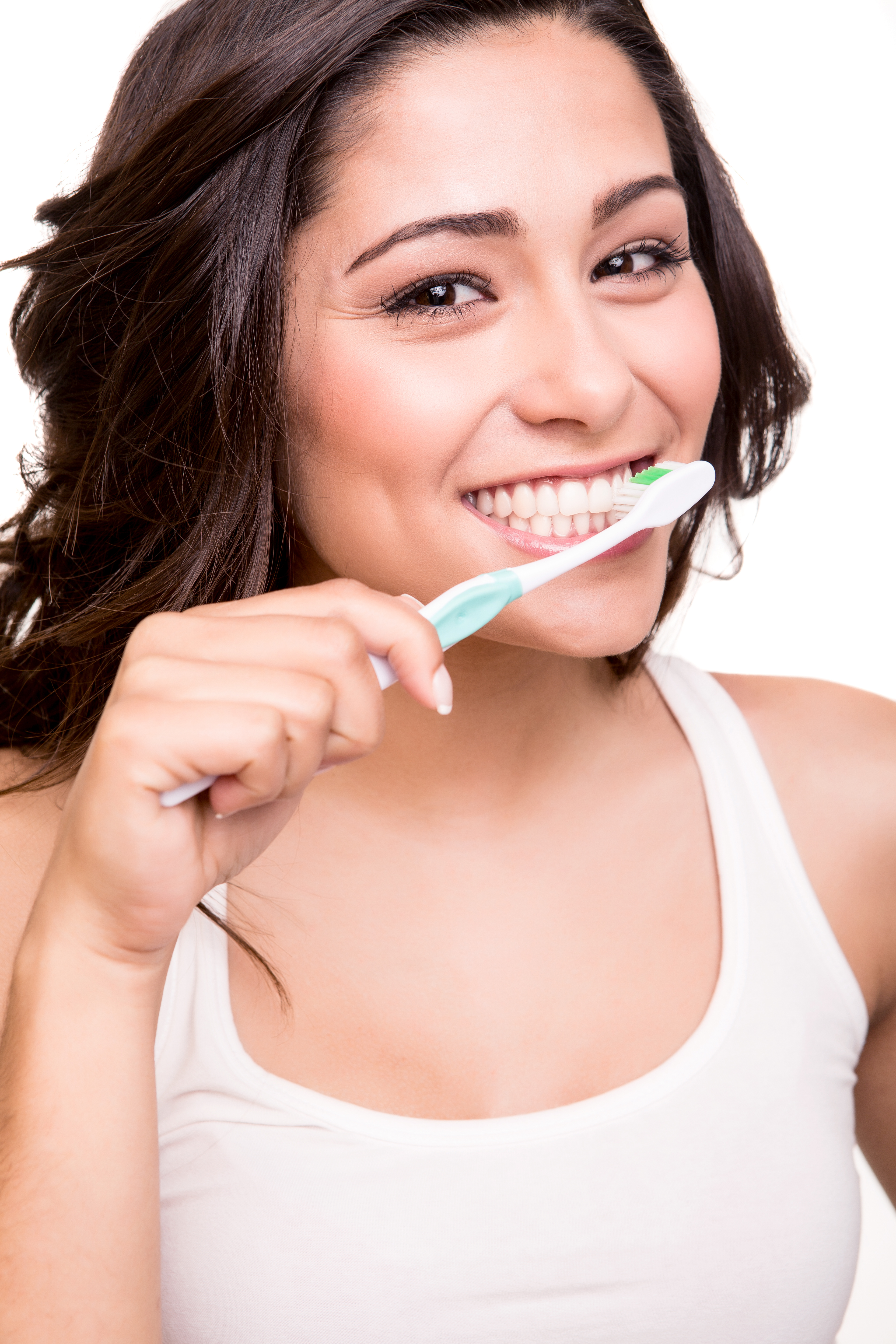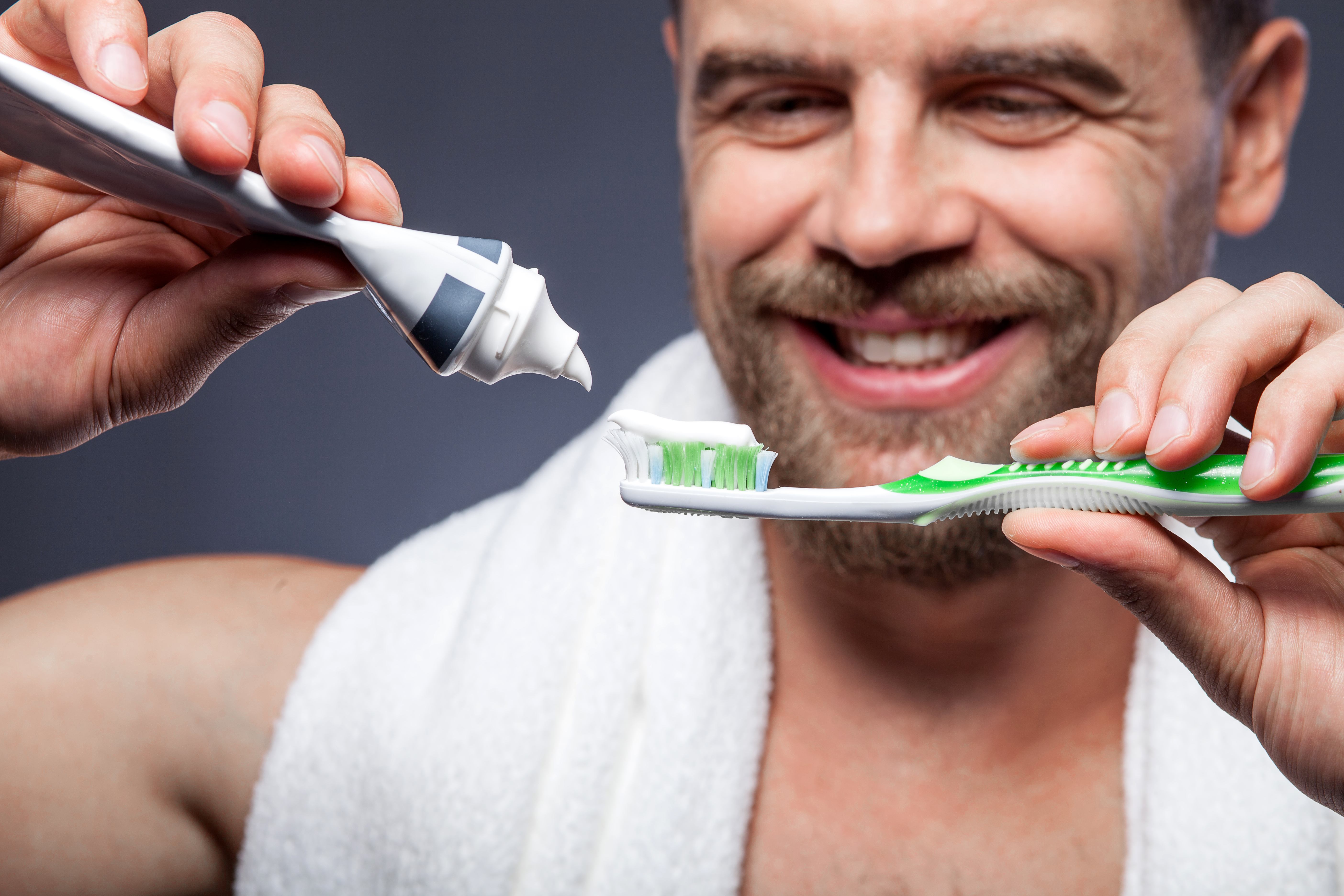
But are you brushing your teeth the right way? Given that you’ve probably been brushing your own teeth since you were a toddler, it’s likely that you’ve developed some bad brushing habits over time. Not only do bad habits make your teeth look yellow and plaque-ridden, but they can jeopardize the overall health of your teeth and gums.
Today, the Larson Dental team is here to refresh your memory with some tips on how and how not to brush your teeth.
Brush Your Teeth With The Right Toothbrush
A lot of our Prescott patients tell us that they don’t really know what type of toothbrush they should use. We understand—the toothbrush aisle can be overwhelming, as most stores carry a huge variety of different brands and styles, and a lot of people end up choosing one at random.
Don’t let this mistake prevent you from choosing the right brush. When picking out your next one, pay attention to these aspects:
- Bristles – Most dentists—this one included—recommend using a soft-bristled toothbrush. Brushes with medium and hard bristles are too abrasive for your delicate gum tissue and enamel. Check out the toothbrush packaging before buying, as most brands will indicate the bristle texture on the package.
- Size – Select a toothbrush with a head that fits your mouth. If you have a smaller mouth and find that reaching every corner of your teeth is difficult, opt for a brush with a smaller head.
- Handle – Choose a handle that feels comfortable in your hand, kind of like a fork. Those with smaller hands may want to look for brushes with thinner handles.
Brush For The Right Amount Of Time
Maybe you already know that you make this mistake. Late at night or in the morning rush, it’s tempting to quickly pull the brush across your teeth and be done with it. This is a huge mistake! If you don’t brush your teeth for 2 minutes at a time, you won’t be able to remove all of the cavity-causing plaque and bacteria attacking your teeth.
2 minutes may not seem like a long time now, but if you’re in a hurry to get to work or bed, it can feel more like 10. Find a song or music video that you enjoy and play it for 2 minutes, as time seems to move quicker when you have something to focus on. Most electric toothbrushes run for 2 minutes at a time as well, which takes the guesswork out of your brushing time.
Spend 30 seconds on each portion of your teeth: the front of your top teeth, the back of your top teeth and then the same on the bottom.
Don’t Overdo It
Have you ever heard the phrase “too much if a good thing is still too much?” While it may seem counterintuitive, brushing your teeth too much can be almost as harmful as not brushing enough. Brushing more than 3 times per day can wear down your enamel and damage your gums, leading to tooth decay and gingivitis. Yes, that’s right—brushing your teeth too much can cause cavities!
When it comes to brushing, thoroughness is more important than toughness. Plaque is so soft that you can actually remove it with something as simple as a rag if you can reach it. Brushing twice or three times per day for 2 minutes at a time, combined with flossing and regular visits to the dentist, can usually keep your smile bright and white.
Toss Your Brush
If your toothbrush is looking a little frayed and frazzled, toss it in the trash and get yourself a fresh one. Frayed bristles won’t clean as effectively as tight, uniform ones. Worn bristles can actually damage your gum tissue as well, which can lead to an entire host of problems that you certainly want to avoid.
Most dentists suggest replacing your brush every 3 months, but if your bristles are looking less-than-perfect before that, do your smile a favor and change it out.
Choose The Right Toothpaste

Your options include:
- Whitening – Are your pearly-whites not looking so pearly? Consider choosing a whitening toothpaste. This option usually contains small amount of bleaching material that works to mask those yellowing stains on your teeth.
- Desensitizing – Those with sensitive teeth usually find relief with desensitizing toothpaste. Full of chemical compounds that block the miniscule holes in your enamel, desensitizing toothpaste can keep from your teeth stinging and aching when they come in contact with hot or cold foods.
- Tartar Control – Choose a tartar control toothpaste if your teeth are prone to buildup and you’re looking to keep them free from plaque. Tartar control paste works to protect your teeth and gums from gathering dangerous, cavity-causing plaque and bacteria.
- Children’s – Your little ones have different dental care needs, so make sure to choose products that work for them. Before your child turns 2, use a paste without fluoride. After their 2nd birthday, select a toothpaste with a small amount of fluoride, as too much can damage their delicate teeth. Select a flavor that they enjoy as well, so brushing feels less like a chore and more like a treat.
Visit Larson Dental For More Toothbrushing Tips
Who knew that brushing your teeth could be so complicated? Because it’s a habit that most of us learned when we were young, it may come as a surprise that you’re doing it wrong. Luckily, the Larson Dental team is here to help you leave your brushing faux pas behind you and get your oral health back on track. If you have any questions or want to see if you need to brush up on brushing, make an appointment with our office today!
